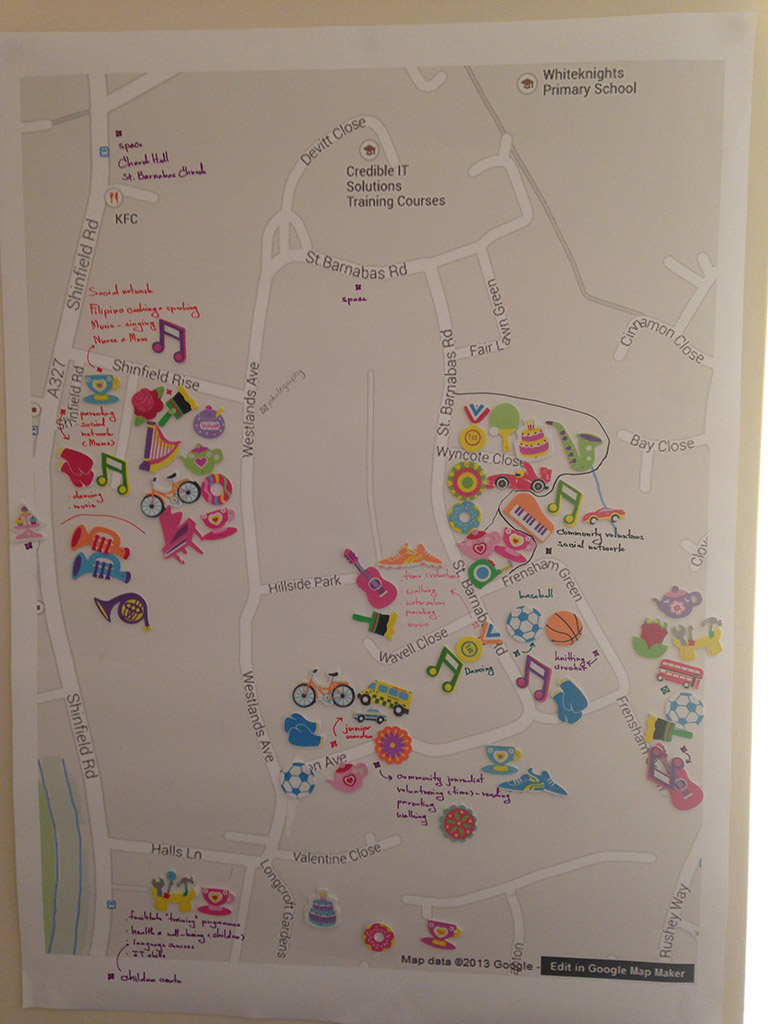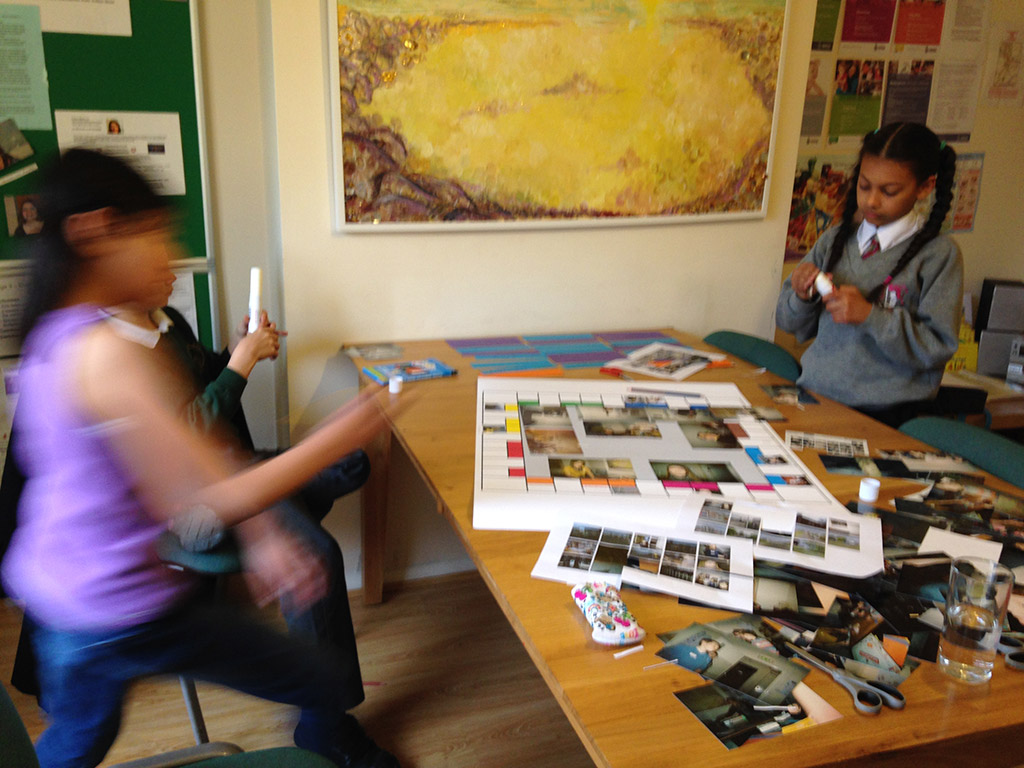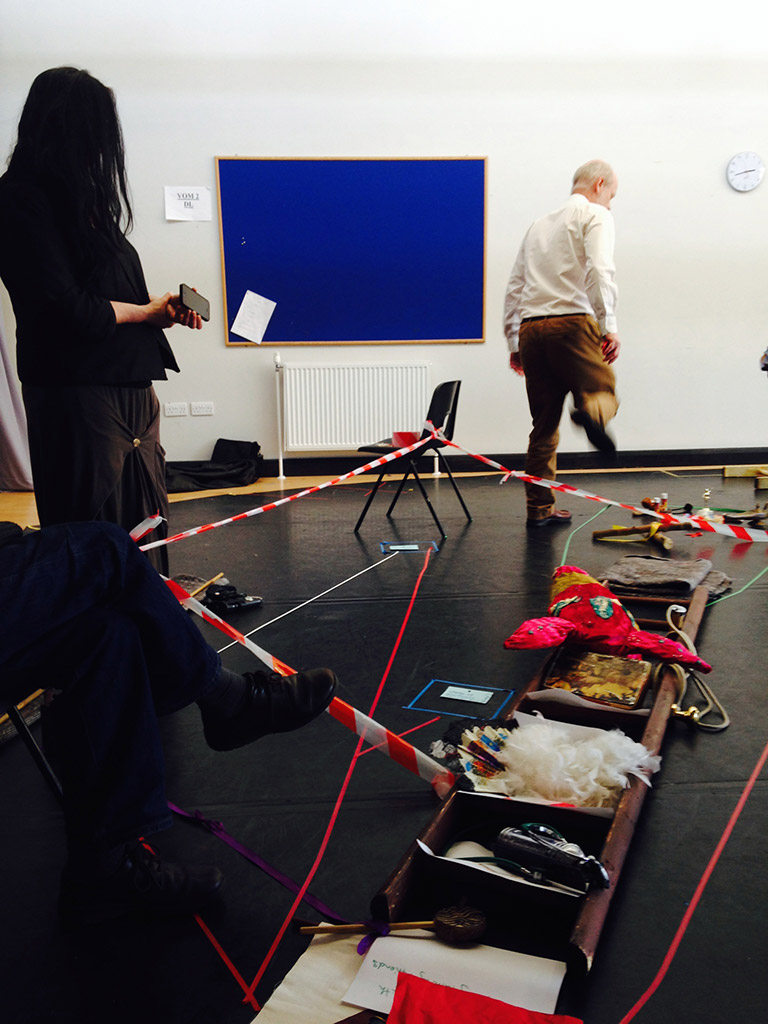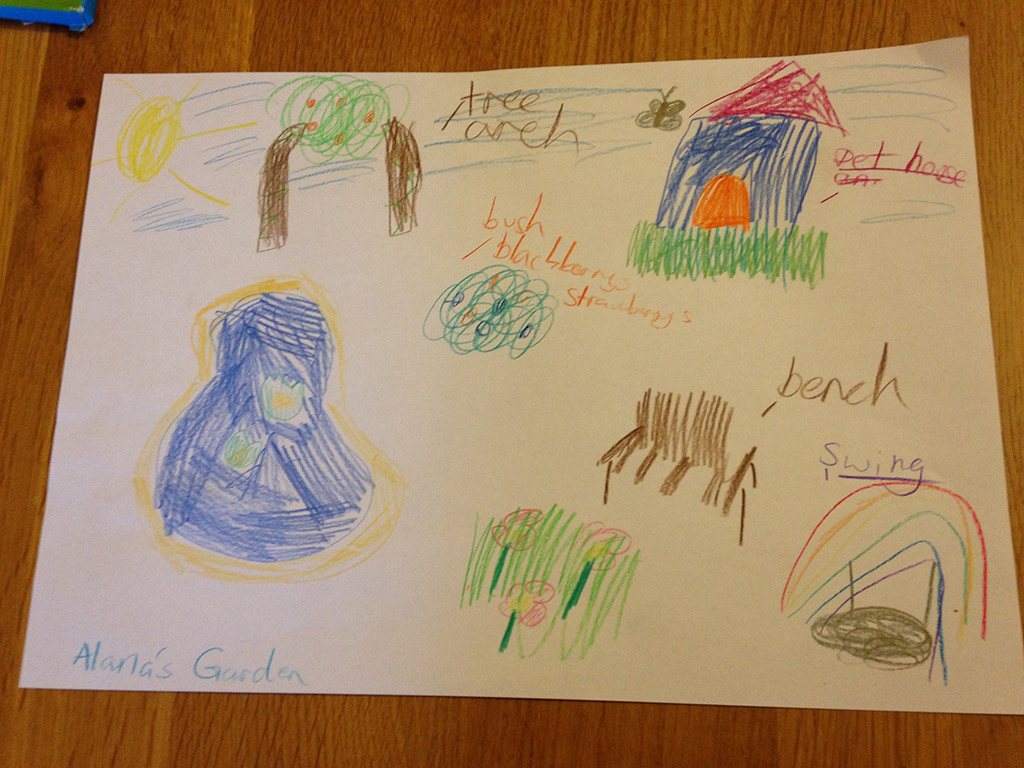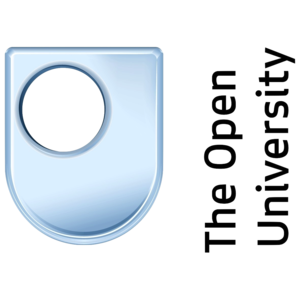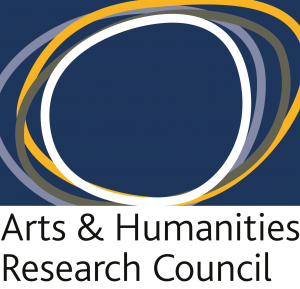Unearthing Hidden Assets through Co-design and Co-production
by Dr Busayawan (Aom) Lam
Brief Description of the Asset Mapping Approach and Underlying Philosophy/Theory
The project started with simple questions raise at the AHRC’s July 2012 summit in Manchester: what does a well-functioning community have that other communities may not have? In this case, well-functioning community can be loosely defined as a strong, resilient and self-reliant community that is capable to adapt and thrive even in difficult times, such as economic downturn.
This question triggered the idea of uncovering community assets as well as exploring how to mobilise and utilise them to address current challenges and create new opportunities that match people’s needs and aspirations. The ‘Asset-Based Community Development: ABCD’ concept developed by Kretzmann and McKnight1 fit well with the research idea and, therefore, was chosen to underpin the study. The ABCD concept suggests that community development should begin with a positive outlook – exploring what a community possesses (e.g. tacit knowledge, culture, skills and social networks) rather than focusing on negative aspects, e.g. problems and deficiencies.
Co-design and co-production were at the centre of the investigation. Experts argued that by taking people through the co-design and co-production process (including co-investigating the issues, identifying real needs, co-creating solutions, testing and refining solutions, and co-producing outcomes), they could gain useful tools and confidence to tackle problems themselves rather than asking for help.2 Hence, the asset mapping approach in this study is characterised by hands-on creative activities that could attract various groups of people, especially ungagged ones. A variety of creative techniques were employed in this study, e.g. LEGO Serious Play, participatory theatrical techniques & cultural animation, creative workshops and asset mapping techniques.
The Contextual Conditions of the Study
This project was particularly interested in identifying hidden assets, e.g. unheard voices of marginalised members of a community. The team was keen to find out how to engage with currently disengaged members of the community and make community developments more inclusive and sustainable. The research managed to attract community partners from various geographic locations, namely Tidworth (Wiltshire), Newcastle-upon-Tyne, Stoke-on-Trent and Shinfield Rise (Wokingham).
Although each community faces different challenges and has different interests, all of them need to engage with wider members of their communities in order to achieve their goals. For example, Tidworth Mums would like to engage with their local community to gain better understanding of local view towards soft play provision. The Shinfield community development worker would like to reach and provide support to disengaged members of the community, e.g. isolated elderly people.
The overall aim of the project is: “to find out how co-design and co-production could assist a community in identifying and unlocking hidden assets in their community by themselves to create solutions that match their needs and aspirations in a sustainable and inclusive manner.” This aim leads to detailed questions covering three strands:
1. How could co-design and co-production methods help a community to uncover and unlock hidden assets in their own community and create solutions that match their community needs and aspirations by themselves in a sustainable manner?
2. How could hands-on creative activities (e.g. participatory theatrical methods) help create a neutral space that appeals to both active and invisible members of the community, allow them to contribute on an equal basis and promote empathy building among all parties involved?
3. How could academics, community-based organisations and communities use the co-design and co-production approach to study community developments?
Partners and Types of Community Assets
The team consisted of academic partners from four different disciplines: design, design management, social geography and management. It also worked with various community enablers, e.g. community development workers, council officers, a member of Army Welfare Service team and staff from not-for-profit organisations (namely The Glass-House Community Led Design, The Churches’ Regional Commission, HealthWORKS Newcastle, The New Vic Borderlines, Kindle Partnerships, and Tidworth Mums). The relationships between the groups of partners, the choices of creative techniques and the type of assets uncovered can be summarised as shown below:
- The Picture of Health project used cultural animation to identify physical and emotional barriers preventing people from taking a more active role in shaping public health services and to help them build the confidence to overcome their current obstacles. Most assets identified through this technique are intangible, e.g. the time and interest of community members on public health issues, unheard voices regarding public health services, and individual and collective creativity.
- The Tidworth Mums: a case for soft play project used asset-mapping to visualise current assets and creative play engagement to build a network of play stakeholders to support the case for soft play for in Tidworth. Most assets identified through this technique are intangible, e.g. underutilising time and manpower, friendships and unheard voices regarding soft play provision.
- The Shinfield Rise Engagement project employed various design tools and techniques, e.g. LEGO Serious Play and collage, to help people recognise themselves as community assets and share ideas about how they wanted their neighbourhood to be a better place to live. Assets identified through this project are both tangible (e.g. underutilised spaces and local facilities) and intangible (e.g. individual and collective creativity, and time for volunteering).
- The Newcastle Reconfiguration of Assets project explored the history of community asset building in East and West Newcastle and the reconfiguration of assets for health working in the context of wider reconfigurations of community assets. Most assets identified through this study are intangible, namely an evaluation of previous engagements, changes of funding and a picture of a history community health assets (e.g. local activists, Link workers and Health Trainers).
The Value (Strengths and Weaknesses) of This Approach and Outputs
The co-design approach and hands-on creative techniques enabled people to revisit issues and challenges in their communities with a fresh pair of eyes and provided a safe space for them to experiment with new ideas. Most partners and people participated in these activities expressed that this project has helped them rethink about their communities and community assets. Many aspects that they did not previously consider as assets (e.g. time) were uncovered through this study.
The outputs range visual expression (e.g. Picture of Health) to an action plan (e.g. a case for soft play area and a plan for a community garden). These fun and engaging techniques are useful in attracting people who may not normally take part in community activities and getting them more involved. However, the design approach and creative techniques cannot work on their own without existing social networks. Although the overall process can be replicated, each community is unique and, hence, requires different ways of unearthing and unlocking community assets.
Different Analytical Approaches
The results were captured in a narrative form. Due to the nature of the study, the results were not systematically analysed. The focus was placed on individual and collective reflections of the processes used to uncover and unlock the assets, the outcomes, and main lessons learned.
Different Ways of Communicating Assets
In this case, the assets were captured and presented in various ways, e.g. asset maps, Monopoly board, visual expression (such as Picture of Health), and a narrative of community health assets. Sander, a renowned expert in co-design, suggested an act of ‘making something’ can help dig deep into people’s latent needs and dreams in the subconscious level3. Conversations alone cannot uncover these hidden thoughts, since people only talk about things that they are aware of. Hence, an act of creating asset maps (e.g. placing stickers on the map or visualise what ‘good health’ means) can help people discover unexpected things and revisit familiar issues through a fresh pair of eyes.
References
- Kretzmann, J.P. and McKnight, J.L. (1993) Building communities from the inside out: a path toward finding and mobilizing a community’s assets. Chicago: ACTA Publications.
- Boyle, D. and Harris, M. (2009) The Challenge of Co-production. London: NESTA
- Sanders, E. (2002) From User-Centered to Participatory Design Approaches. In J. Frascara (Ed.) Design and the Social Sciences, Taylor & Francis, 1 – 8.
